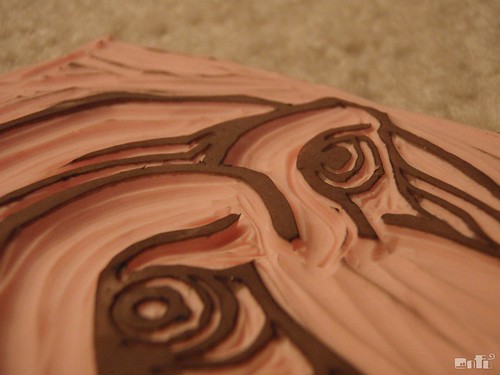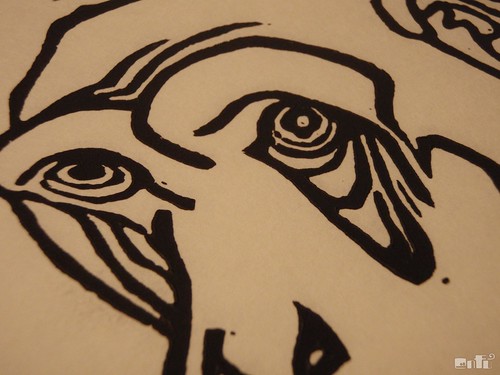I remember taking woodblock printing as part of art class in school in Japan. I know there is a lot of toil that goes into carving alone. I've always known of lino cuts from reading about it in this book that got me seriously thinking about printmaking as a viable creative outlet.
After attending an Rei Morimura's print demonstration at Azuma Gallery and having hands on experience with printing from his lino cuts, I thought it was finally time for me to take the plunge. I hear some artists call their prints woodblocks when they are technically lino cuts. More on this later.
Here is what are all the supplies you need to get this project rolling:
I went to my local art store and picked up this starter kit:
I find that once I purchase easy to use starter kits I'm more likely to experiment with the techniques on my own I highly recommend:
Speedball Linoleum Block Printing Starter Set but if you are like me and don't want to work hard chiseling away at the lino and want to feel like you're cutting through butter then I'd recommend any easy cut lino material out there, there are a ton of them out there like this: Blick Wonder-Cut Linoleum
I also got some simple test design & technique ideas from this book I bought kind of as an impulse buy but was glad I picked it up. This book had a lot of pictures and really easy for anyone to understand explanations.
I took an image that I had already drawn, then rubbed it onto this easy cut lino and then enhanced the lines on the lino with a black marker. I then used the broadest cutting tool and scooped away at the top layers. Be careful because its like cutting through butter its easy to cut through your own lines.
Then get yourself some craft paper, roll on your inks using the brayer included in the kit, and finally use the baren also included in the kit (or any other flattish object like a spoon) and rub the ink onto the paper. The first couple ones are usually throw away because the inks on the brayers are usually either too clumpy or uneven at first.
But if you're going to get serious with this I would recommend Mulberry paper like the ones the master woodblock artists like Hiroshige used.
I also would not recommend getting this paper online until you've practiced on this a couple times. Its not cheap, and you'd probably want to feel it between your fingers and get the right type for your needs.
This was my first and only attempt so far at Lino cuts, so I'm so not an expert at this. I can tell you for sure though its a fun weekend project which is very rewarding.
Lino cuts vs. Woodblocks:
I asked a friend of mine why some artists say their works are woodblock prints when they actually made them with lino cuts. He said they are essentially the same thing but I still am not convinced. Lino cuts cannot produce the grain texture left behind on woods, they can only fake it. So if you're a purist, you'd make that discrimination between lino cuts and woodblocks. There are even artists out there that burn their wood to get a certain texture that only burned wood can give. It also depends on what kind of art collector you are. I for one tend to place more value on pieces that I know more about, and know the toil that must have went into them. This same friend of mine who owns multiple Hiroshige prints himself said to me something I'll never forget: "You don't ever own artwork, you are only renting it. You rent the time while you're alive to enjoy it, and when you pass someone else will rent it."





